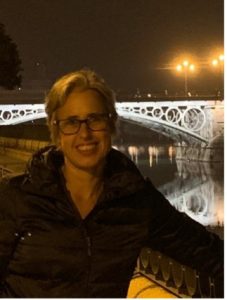Abstract: The general aim of our research is to study fundamental problems that arise in computational topology and their interaction with data analysis and machine learning. The project is divided into three fundamental sections:
1. Advances in computational algebraic topology. The first part of the project is devoted to studying the computability of some known notions in algebraic topology:
1.A. Computing minimal Sullivan algebras. This research line is focused on the design of algorithms that computes Sullivans minimal models of topological spaces and the necessary theoretical study of this problem.
1.B. Matching of persistence modules. We focus here on providing a constructive proof of the existence of an induced partial matching by a morphism of persistent modules and study its interaction with modules generated in a varying system.
1.C. Universal approximation theorem: a computational topology approach. Universal approximation theorem guarantees that any continuous function can be approximated by a one-hidden-layer feedforward network. Using approximations of continuous functions by simplicial maps, we intend to provide a constructive algorithm of this network and to extend the results to classification in multi-labeled problems among others.
2. Advances in computational geometric topology. The second part of the project is devoted to investigating several topological-aware methods to store, manipulate or represent spaces:
2.A Euler well-composed complexes: In previous works, members of the team proposed a method for repairing a cubical complex associated with an nD picture, producing a simplicial complex that is homotopically equivalent to the initial complex and that is weakly well composed. Our final goal is to prove that such an nD repaired complex is continuously well-composed, (each vertex on the boundary has a neighborhood homeomorphic to an (n-1)-ball). Here, we take one more step forward, defining a new combinatorial concept of wellcomposedness.
The condition of having a neighborhood homeomorphic to a ball will be translated into the condition of having a link with the same Euler characteristics than a ball.
2.B. Filtration simplification: The aim of this line is the simplification of a given filtration obtained from combinatorial maps representing orientable manifolds with or without boundary, while simultaneously controlling the perturbation in the associated persistence diagrams.
2.C. Representative datasets: One of the main problems of neural network approaches is that training a neural network is computationally expensive. The idea behind this line is to use persistent homology to eliminate redundant data to speed up the training step.
3. Applications:
3.A. Classification of literary styles. We will use neural networks to embed words from poems written by different authors and then calculate the persistent homology of point clouds derived from such embedding. The comparison between poems can be done by comparing persistence barcodes.
3.B. Topological analysis of biological data. Epithelial tissues can be considered as region-based segmented 2D images that can be modeled using alpha complexes. Their topological analysis can reveal inherent topological information of the cell arrangements in the tissue that have not been considered so far.
Source of Funding: State Plan 2017-2020 Knowledge Generation – R + D + i Projects / PID2019-107339GB-I00
Implied entities: Universidad de Sevilla, EPITA (France), United Technologies Corporation (Italy), Ohio State University (USA)
iMAT research line: ⊕ RL2. Modeling of Biological Systems and Health
Researchers:
Nieves Atienza Martínez
Miguel Ángel Gutiérrez Naranjo
María José Jiménez Rodríguez
Nicolas Boutry
Belén Medrano Garfia
Eduardo Paluzo Hidalgo
Matteo Rucco
Ryan Slechta
Manuel Soriano Trigueros

 PI:
PI: 